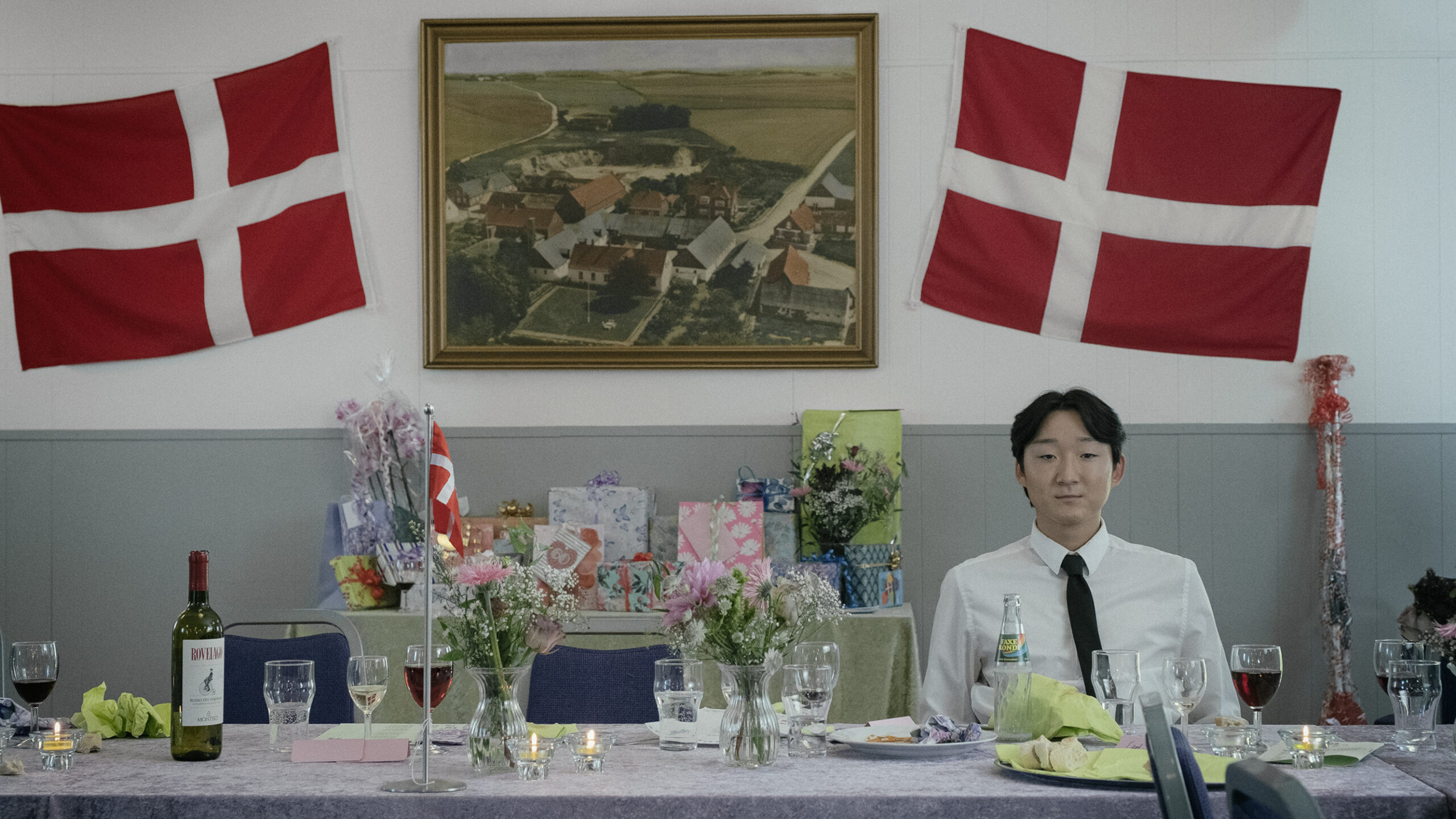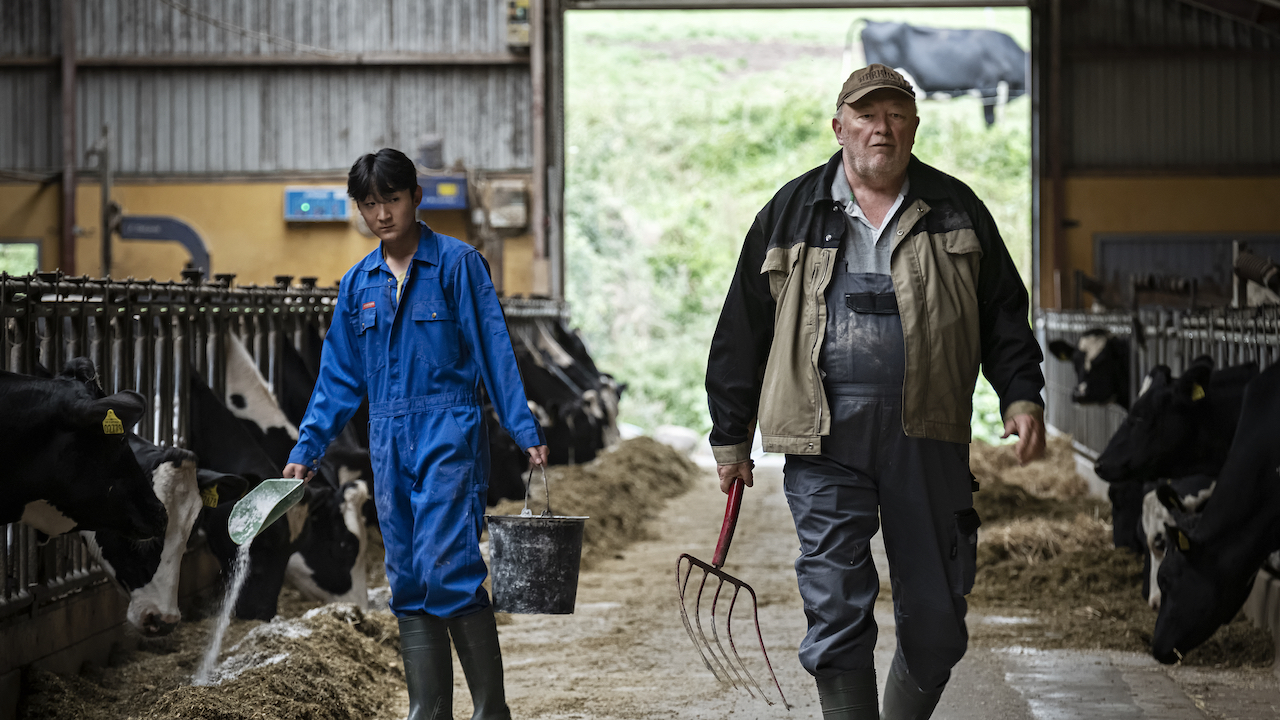interview
Growing up in a white majority when you are not white makes you susceptible to identity crises. A time might come when despite your best efforts and despite what everyone around you keeps telling you, you are confronted with being different.
“Different” is not an identity, nor is it a community you can be part of. Such personal crises can occur at any time and can vary in degrees depending on the generation of immigrant you are, which communities you exist in, and whatever is around you.
With this in mind, it’s almost comical how bad the setup is for Carl (Cornelius Won Riedel-Clausen), the main character in Malene Choi’s new film, The Quiet Migration. As a young adoptee from South Korea, he is transplanted to a farm in the middle of nowhere Denmark, living with solitary parents who can barely hold a conversation with each other, let alone him. The film portrays his crisis unfolding.
The story is fiction, but it has autobiographical elements as the director herself was adopted from Korea by a Danish family. Around 200,000 South-Korean children have been adopted by Western countries in the past decades, for the most part by white parents.
Choi uses long wide shots to form a picture of a calm, repetitive countryside life. Watching The Quiet Migration is like standing at the top of a hill and waiting for Carl to interact with his surroundings. Or waiting for his surroundings to say something racist.
We sat down with director Choi to talk about her aesthetic choices and what it means to tell this story today.

Projektor: In one long take of empty farmland, you played this song by rapper Pind. It was an unexpected but beautiful composition. Can you talk about this choice?
Malene Choi: There is friction to that scene, between something that is very classical-looking, a nice landscape, and a young man’s voice rapping. The song is made with only one instrument and the artist’s voice, and it was a little bit of an angry voice. The juxtaposition speaks to Carl’s growing anger.
I remember when I watched the music video, it was just the singer at a countryside bus stop. There was an emptiness and a loneliness to him just standing there and expressing himself. It was like he was saying “I’m lost out here,” and that really corresponded to the story I was trying to tell.
Carl is the only non-white person for miles, but then one day he meets another adoptee from South Korea, Marie (Clara Thi Thanh Heilmann Jensen). Can you speak to the significance of meeting her?
When you meet someone who looks like you, when you look at them, you see yourself mirrored back. Personally, unless I look in a mirror, I tend to forget that I am Asian and that I look South Korean. So I think that when he sees Marie, he sees his own Asianness. This makes it easier for him to explore and search for his origins.
That said, there are many more levels to the issue of adoptee identity beyond visually not being able to see yourself mirrored—for example, not having access to your own history. There is this gap that you have to live with, and it’s a gap that is open to be filled with dreams, hopes, and imaginations, but also loss, grief, and sorrow.
Meeting a person who looks like you doesn’t take that gap away. President Barack Obama was accused of being an “Oreo,” white on the inside but Black on the outside. We call ourselves “bananas,” white on the inside and yellow on the outside. I had a white upbringing and I really feel Danish, so every time I go to South Korea, I just feel Danish. I will never, ever be able to live there.
I’ve heard a few mixed-race friends say that as well since there is no race called “mixed race.” So there is a certain universality to this story, but where do you think that lies?
The story has to do with being insecure about who you are, where you belong, and what you want to do with your life. It’s a coming-of-age movie in a way. You’re trying to find your place in the world, but to do that, you must understand and feel like yourself first.
You have to be true to yourself before you can have instincts about what to do about your situation. So I think that’s the universal part of the film, that search for oneself.
You’re trying to find your place in the world, but to do that, you must understand and feel like yourself first.
How did the slow, long takes help tell this story?
I wanted to make a movie that has a realistic depiction of life on a farm. I wanted the audience to believe that these people really live out there. By blending a documentary style into a fiction movie, I hoped that it could add authenticity to the story.
We didn’t use a lot of close-ups and opted instead for wide shots where you can see the characters’ full bodies. You could, for example, see the contrast between the farmer Hans’ (Bjarne Henriksen) huge frame and Carl’s small build. We wanted the cinematography to feel like you’re looking at their lives.

There were also some supernatural scenes, like when a meteor falls on the farm.
I think the meteorite is a metaphor for the alienation that adoptees feel. Our lives started on planes in the sky, and it feels sometimes like we were dumped in a random place on Earth, in a random family. It’s an analogy to how we came into the world.
I read somewhere that you want to make a movie about a future where Danish kids get adopted in Asia. Tell me more.
It’s a sci-fi movie, and it’s set in 2073, a year in which Asians have taken over Europeans. This is actually already happening, with for example Chinese nationals buying properties in Greece. The movie would be all the things that we take as natural nowadays, but flipped over. I wanted to see what it would be like when the Europeans are the lower class.
Curated by humans, not algorithms.
© 2024 A Good Movie to Watch. Altona Studio, LLC, all rights reserved.